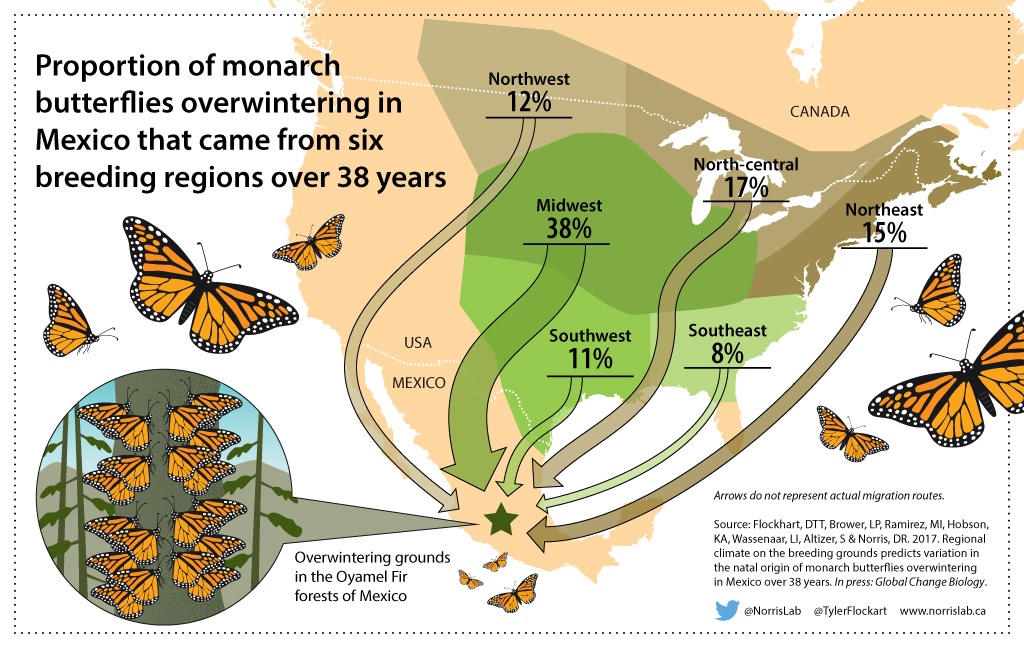Hi there!
So, are you here because financial admin processes are eating into your nights and weekends or did you just see a random animal and think: "What the heck is this all about??"
Either way, we've pulled together several resources to give you more information on the Sage Intacct migration process, cost, and whether it's the right move for your business—and yes, there are more fun animal facts.
Did we miss something? Feel free to contact us directly at contact@rklesolutions.com
(a real email address received by our actual team)
Sage Intacct 
FREE YOUR TEAM FOR GROWTH
Sage Intacct 
Free your team for growth

On this Page:
Monarch Butterflies joined the endangered species list in 2022
Some things are worth saving.
Your old accounting system isn't one of them.

Learn ⠇How We Can Help with Your Migration
One of the biggest concerns in undertaking an ERP migration project is the movement of a company's data from the old system to the new one. Migrating to a new software system is a bit like moving to a new house. Yes, it can be a bit of a chore (yes, there is even cleaning involved), but ultimately your team is going to have access to a host of new amenities and be able to work more comfortably and productively. While the scope of every migration project is different, the preparation for migrating data follows the basic process outlined in this video.
LEARN ⠇How You Can Help with Their Migration
Monarchs cannot survive without milkweed; their caterpillars only eat milkweed plants (Asclepias spp.), and monarch butterflies need milkweed to lay their eggs. With shifting land management practices, we have lost much milkweed from the landscape. Planting native milkweeds provide food for monarch caterpillars and native flowers provide food for adult butterflies.
Scroll to the bottom to learn how you can help Monarchs and other pollinators.
READ ⠇A Q&A With a Migration Client
A Real-World Perspective on Migration
 Following their company’s culture of technological progress, in March 2020, Hall Ambulance’s accounting team went live with a new Sage Intacct cloud financial management solution. Before they decided to make the switch to Intacct, Hall Ambulance was using Sage 300 and struggling with clunky reporting and dated technology in the old system. Recently RKL eSolution’s Director of Cloud Sales, Mark Severance, sat down with Michelle Garretson, Financial Controller at Hall Ambulance, to discuss her experience in migrating to Sage Intacct.
Following their company’s culture of technological progress, in March 2020, Hall Ambulance’s accounting team went live with a new Sage Intacct cloud financial management solution. Before they decided to make the switch to Intacct, Hall Ambulance was using Sage 300 and struggling with clunky reporting and dated technology in the old system. Recently RKL eSolution’s Director of Cloud Sales, Mark Severance, sat down with Michelle Garretson, Financial Controller at Hall Ambulance, to discuss her experience in migrating to Sage Intacct.
PRICING GUIDE ⠇How Much Does Sage Intacct Cost?
Calculating the Cost of Software
Sage Intacct's pricing is a combination of modules, user licenses, and entities.
As much as we'd like to give a straightforward price, the complex nature of ERP software implementation makes for too many use-case scenarios. Take a look at this guide to learn which of your business needs could affect the final cost.
Pricing scenario:
A company outgrowing QuickBooks needs core financials, 2 additional entities, 5 business users, and 10 employee users.
Sage Intacct’s annual subscription for that configuration is $20-25k
Estimating the Cost of Implementation
Working with an implementation partner is the best way to ensure a positive outcome from your project.
Our highly collaborative implementation methodology is a delivery framework of phases, tasks, and milestones to ensure that your people, processes, and technology are all prepped and ready for success.
The Bottom Line:
A good “rule of thumb” for estimating the cost of services is that for every dollar you spend in subscription, you can expect to spend 1 – 1.5 dollars with a consulting organization like RKL.
Factoring in the Cost of Time-Spent
The most successful projects result when the Client takes is an active participant at each stage
Your team will play a critical role in project success. Like any good partnership, a software implementation requires 100% commitment from both our team and yours.
The Bottom Line:
Here's about how much time each role can expect to spend on the project:
Executive Sponsor: 2 hrs/month
Project Manager: 4-6 hrs/week
Core Users: 2-4 hrs/week
Technology Team: Periodic/as needed
Why RKL eSolutions?

The migration and implementation process was very robust. The RKL eSolutions team met with our staff, answered questions openly, and showed us how each module worked. They were also available by phone or email if we ever needed them for any help down the road.
Bryan Schmidt, Controller for UNITE HERE HEALTH


RKL eSolutions is very capable. They understand the product thoroughly and bring a highly structured approach that ensures nothing gets missed. It’s clear to me that their priority is solving business problems, not selling software.
Lyuba Ross, fmr. Controller for PLLC


It’s a pleasure working with RKL as our trusted partner. Their extensive knowledge of entertainment industry best practices and expertise with Sage Intacct enables our small finance team to be a strategic resource for the entire organization.
Chris Hickey CFO AMBI


RKL eSolutions provides exactly the support we need by serving as subject-matter experts on our whole solution. Their input on best practices helped us replace several Excel-based tasks and slash our budget cycle by 30%"
Bryan Schmidt, Controller for UNITE HERE HEALTH

Talk to the Sage Intacct Team

THEIR MIGRATION ⠇Why are Pollinators So Important?
Three-fourths of the world’s flowering plants and about 35 percent of the world’s food crops depend on animal pollinators to reproduce. That’s one out of every three bites of food you eat. More than 3,500 species of native bees help increase crop yields. Some scientists estimate that one out of every three bites of food we eat exists because of animal pollinators like bees, butterflies and moths, birds and bats, and beetles and other insects.
How to Help Your Local Pollinators
Whether you have a few feet on your apartment balcony, a yard in need of landscaping or several acres, you can make a difference. Follow this easy step by step guide by the US Fish and Wildlife Service to build your own pollinator garden and help ensure the future is filled with pollinators. Don't have a yard? Learn how you can help from your window sill with pollinator-friendly potted plants.
Tips for Planting
Enjoy the magic of meadowscaping! Learn everything you need to know about growing wildflowers in this wildflower guide by American Meadows. Don't have time to plan a meadow? Make some seed balls to jump start natural pollinator patches in un-mowed areas along your yard, hiking trails or forest edges.


